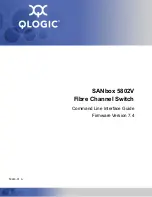
FHSS
Frequency-Hopping Spread Spectrum is a transmission technology used in Local Area Wireless
Network (LAWN) transmissions where the data signal is modulated with a narrowband carrier signal
that 'hops' in a random but predictable sequence from frequency to frequency as a function of time
over a wide band of frequencies. This technique reduces interference. If synchronized properly, a single
logical channel is maintained. (Compare with
DSSS (Direct-Sequence Spread Spectrum)
.)
GARP
Generic Attribute Registration Protocol registers an attribute with other participants. It is specified in
IEEE 802.1D-2004, clause 12.
GVRP
GARP (Generic Attribute Registration Protocol)
Registration Protocol is used to
dynamically register VLANs on ports. It is specified in IEEE 802.1Q-2005, clause 11. GVRP is an example
of the use of GARP, hence the G in GVRP.
IBSS
An IBSS is the 802.11 term for an ad-hoc network. See
ICMP
Internet Control Message Protocol is the part of the TCP/IP protocol that allows generation of error
messages, test packets, and operating messages. For example, the ping command allows you to send
ICMP echo messages to a remote IP device to test for connectivity. ICMP also supports traceroute,
which identifies intermediate hops between a given source and destination.
ICV
Integrity Check Value is a 4-byte code appended in standard
WEP (Wired Equivalent Privacy)
to the
802.11 message. Enhanced
inserts an 8-byte MIC just before the ICV. (See
IETF
The Internet Engineering Task Force is a large, open, international community of network designers,
operators, vendors, and researchers concerned with the evolution of the Internet architecture and the
smooth operation of the Internet. The technical work of the IETF is done in working groups, which are
organized by topic.
IGMP
Hosts use Internet Group Management Protocol to inform local routers of their membership in multicast
groups. Multicasting allows one computer on the Internet to send content to multiple other computers
that have identified themselves as interested in receiving the originating computer's content. When all
hosts leave a group, the router no longer forwards packets that arrive for the multicast group.
IMAP
Internet Message Access Protocol is used by email clients to retrieve messages from a mail server. IMAP
is the protocol that IMAP clients use to communicate with the servers, and
is the protocol used to transport mail to an IMAP server.
The current version is IMAP4. It is similar to POP3 (Post Office Protocol version 3), but offers additional
features. For example, the IMAP4 protocol leaves your email messages on the server rather than
Glossary
ExtremeSwitching 200 Series: Administration Guide
358












































